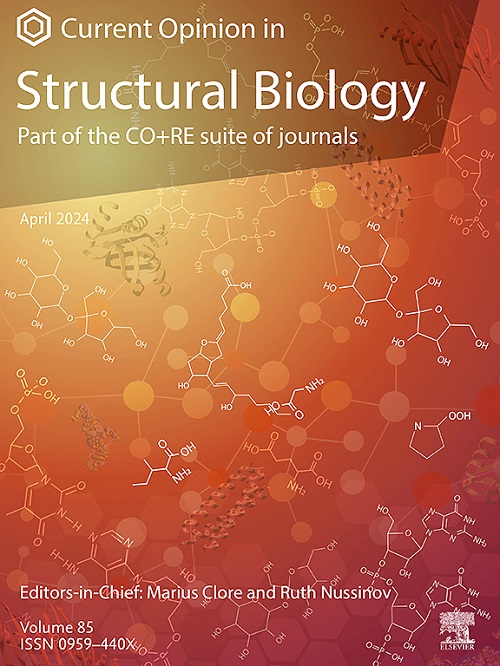用深度学习导航蛋白质核酸序列结构景观
IF 6.1
2区 生物学
Q1 BIOCHEMISTRY & MOLECULAR BIOLOGY
引用次数: 0
摘要
在AlphaFold彻底改变蛋白质结构预测领域的几年后,结构生物学的新前沿和局限性变得更加清晰。预测蛋白质与核酸的相互作用目前是该领域尚未解决的主要挑战之一。这种知识差距源于实验数据的稀缺性和有限的多样性,以及核酸独特的几何、物理化学和进化特性。尽管存在这些挑战,在预测蛋白质-核酸复合物结构和设计能够结合特定蛋白质构象的核酸方面,已经出现了创新的想法和有希望的方法发展。本文介绍了这些最新进展,并讨论了有前途的途径,包括高通量分析数据的整合,更严格和更丰富的评估基准的开发,以及使用自监督学习发现具有生物学意义的调节和结构信号。本文章由计算机程序翻译,如有差异,请以英文原文为准。
Navigating protein–nucleic acid sequence-structure landscapes with deep learning
A few years after AlphaFold revolutionised the field of protein structure prediction, the new frontiers and limitations in structural biology have become clearer. Predicting protein–nucleic acid interactions currently stands as one of the major unresolved challenges in the field. This knowledge gap stems from the scarcity and limited diversity of experimental data, as well as the unique geometric, physicochemical, and evolutionary properties of nucleic acids. Despite these challenges, innovative ideas and promising methodological developments have emerged for both predicting protein–nucleic acid complex structures and designing nucleic acids capable of binding to specific protein conformations. This review presents these recent advances and discusses promising avenues, including the integration of high-throughput profiling data, the development of more rigourous and richer evaluation benchmarks, and the discovery of biologically meaningful regulatory and structural signals using self-supervised learning.
求助全文
通过发布文献求助,成功后即可免费获取论文全文。
去求助
来源期刊

Current opinion in structural biology
生物-生化与分子生物学
CiteScore
12.20
自引率
2.90%
发文量
179
审稿时长
6-12 weeks
期刊介绍:
Current Opinion in Structural Biology (COSB) aims to stimulate scientifically grounded, interdisciplinary, multi-scale debate and exchange of ideas. It contains polished, concise and timely reviews and opinions, with particular emphasis on those articles published in the past two years. In addition to describing recent trends, the authors are encouraged to give their subjective opinion of the topics discussed.
In COSB, we help the reader by providing in a systematic manner:
1. The views of experts on current advances in their field in a clear and readable form.
2. Evaluations of the most interesting papers, annotated by experts, from the great wealth of original publications.
[...]
The subject of Structural Biology is divided into twelve themed sections, each of which is reviewed once a year. Each issue contains two sections, and the amount of space devoted to each section is related to its importance.
-Folding and Binding-
Nucleic acids and their protein complexes-
Macromolecular Machines-
Theory and Simulation-
Sequences and Topology-
New constructs and expression of proteins-
Membranes-
Engineering and Design-
Carbohydrate-protein interactions and glycosylation-
Biophysical and molecular biological methods-
Multi-protein assemblies in signalling-
Catalysis and Regulation
 求助内容:
求助内容: 应助结果提醒方式:
应助结果提醒方式:


